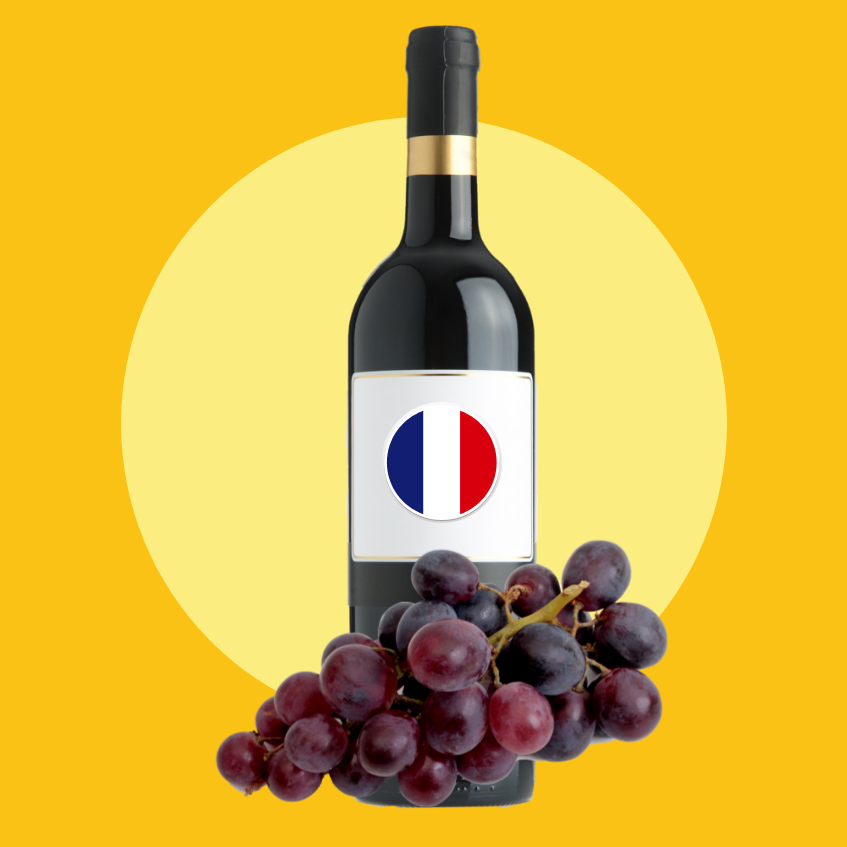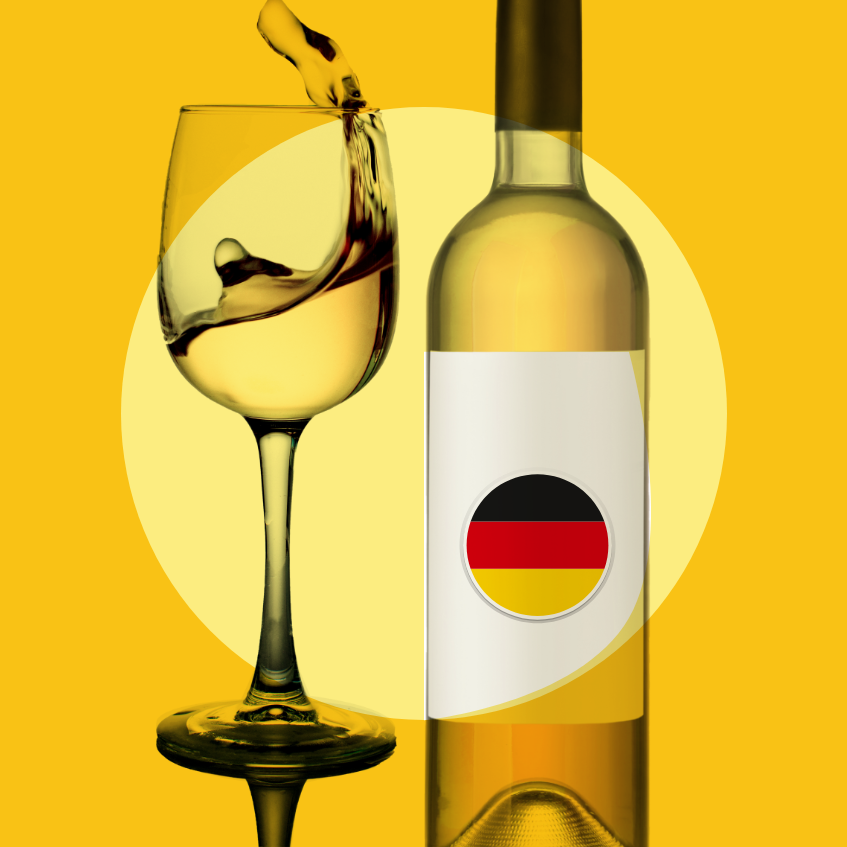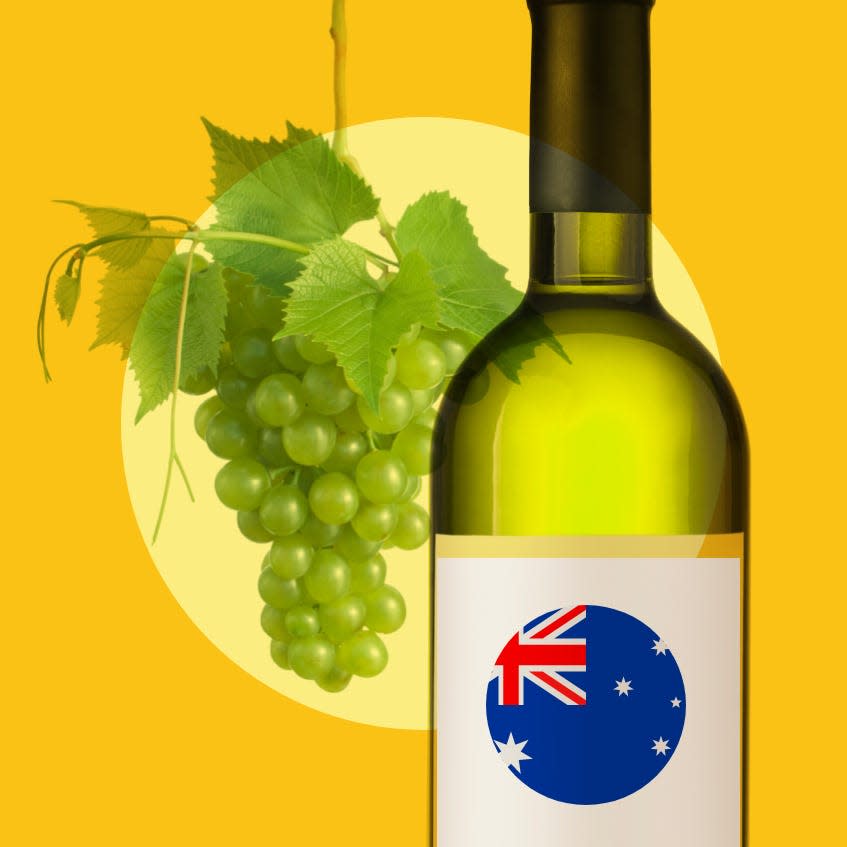Your Complete Guide To The World's Most Popular Wine-Making Regions

Look at any wine label, and you’ll find an indication as to where that wine’s been produced. We’re talking everything from entire countries to exact vineyards. But before making any type of judgement on the sort of wine that’s produced where – you need to know the key wine regions in the world. And more importantly, what they’re known for making.
To help ease that burden, we’ve broken down the major wine-making regions across the globe and given you a little insight into the sorts of wines they're most famous for producing and why.

ITALY
Let’s not beat around the bush – Italy is one of, no scrap that, *the* most influential and biggest player in the wine-making industry. With around 20 significant wine regions and over a million vineyards, you could say the Italians are a force of nature when it comes to making outstanding wines. In 2020 alone, they produced a huge 41 million hectolitres.
Notorious for major grape varieties like Pinot Grigio, Sangiovese, Merlot, Nebbiolo and of course, Glera (used for making Prosecco), you’re never visiting Italy and not coming home without a bottle or two.
Pinot Grigio from Italy tends to come from the Veneto region, and is often what you find on most restaurant wine menus. Typically, they’re produced in high volumes, making them inexpensive. And a lot of the time, they’ll have a short finish (the flavours don’t last long in your mouth) so are usually considered acceptable to good in quality.
Moving into the central regions of Tuscany is where you'll find the black grape variety most famous for producing Chianti: Sangiovese. Sangiovese is a grape that's widely planted throughout Italy, but is mostly known for producing expressions of Chianti. The Chiantis here have pronounced red fruit aromas, and often notes of dried herbs.
Elsewhere in Italy, there's even regions that only permit one type of grape variety. Yep! In Northern Italy, within Barolo, Nebbiolo is the *only* grape variety that's allowed to grow. In this region, the wines that are produced using Nebbiolo grapes tend to posit full bodies, pronounced flavours and high levels of tannins and acidity.
Top wine regions: Asti, Barbaresco, Barbera D’Asti, Barolo, Brunello Di Montalcino, Chianti, Fiano Di Avellino, Gavi, Montepulciano D’Abruzzo, Prosecco, Puglia, Soave, Valpolicella, Veneto, Verdicchio Dei Castelli Di Jesi
Key grape varieties: Pinot Grigio, Moscato, Nebbiolo, Barbera, Garganega, Corvina, Verdicchio, Montepulciano, Primitivo, Fiano, Sangiovese

FRANCE
Often battling with Italy for top-spot, France too is recognised for making incredible wines. France has around seven primary wine regions: Alsace, Bordeaux, Burgundy, Beaujolais, Champagne, Loire Valley and Rhône, each known for making a wide variety of wines.
Regions further north are prone to cooler more moderate climates, therefore making everything from Sauvignon Blanc to Chardonnay and Pinot Noir. Whereas regions located further south, which are warmer in climate, are more likened to producing Cabernet Sauvignon, Syrah and Grenache.
France is especially known for serving up some cracking blushes. Er, hello Southern Rhône?! Commonly associated with making rosé wines, Grenache is a black grape variety that flourishes in a warm climate. In Southern Rhône, the valley is considerably flatter than in Northern Rhône, and the conditions are warm here, making it a perfect location for Grenache to ripen successfully.
Top wine regions: Alsace, Bordeaux, Burgundy, Beaujolais, Champagne, Loire Valley, Rhône
Key grape varieties: Pinot Gris, Pinot Noir, Sauvignon Blanc, Chardonnay, Merlot, Sémillon, Cabernet Sauvignon, Syrah, Grenache, Viognier, Gamay, Riesling, Gewurztraminer, Chenin Blanc, Meunier

SPAIN
In Spain, if it’s not a refreshing, medium-bodied glass of Albariño, it’s a simple, fruity, light-bodied/or powerful, oak-aged Tempranillo (as always, depending on where it’s grown).
Yep! Spain’s Catalunya region produces huge quantities of Tempranillo and Tempranillo-based blends. But it’s actually in Ribera del Duero where you’ll discover outstanding versions that are full-bodied and brimming with fresh, black fruit flavours.
The white grape variety known as Albariño can instead be found growing in the cool climate of Rías Baixas where it’s cooler, wetter and cloudier in comparison to many other wine-making regions in Spain. It’s for this reason that it’s so well-matched to producing refreshing, acidic and citrus-heavy Albariños.
Top wine regions: Catalunya, Jerez, Navarra, Priorat, Rías Baixas, Ribera del Duero, Rioja
Key grape varieties: Tempranillo, Garnacha, Cádiz, Albariño

GERMANY
Recognised as the flagship of Riesling wine (for good reason), it's in Germany where you’ll find Rieslings that vary in aroma, taste and body.
Often described as an "aromatic wine," German Rieslings mostly offer up stone fruit flavours of nectarine, apricot and peach and are often sweeter than other variations. Good examples come from the Mosel region, which specifically produces light-bodied, medium-sweet Riesling wines. Compared to Pfalz, where you’ll find more medium-bodied, drier Rieslings.
Top wine regions: Mosel, Pfalz, Rheingau
Key grape varieties: Riesling

CHILE
We’re in New World territory now, team. And there’s so many reasons for you to get just as excited as us. Renowned for making good-quality and reasonably priced wines, it's fair to say that Chile has certainly made its mark on the wine industry.
Chile’s most widely planted grape is Cabernet Sauvignon, making total sense with the country’s ideal warm climate and growing conditions. It’s grown across the Maipo Valley and Colchagua Valley, both important sub-regions within the broader Central Valley. Cab Savs made here tend to present ripe black cherry flavours, with earthy notes and a touch of spice.
Top wine regions: Casablanca Valley, Central Valley, Colchagua Valley, Maipo Valley
Key grape varieties: Cabernet Sauvignon, Pinot Noir, Chardonnay, Sauvignon Blanc, Merlot

ARGENTINA
Argentina's leading grape variety is Malbec. As the country's most planted grape, Malbec has conjured up quite the reputation over the years.
Native to South-West France, Malbec has adapted to suit warmer climates and is now widely grown across Argentina. But it's safe to say, it's mostly known for its production among the higher altitude region of Mendoza.
Malbec produced in Mendoza tends to be plump and full-bodied, with dark fruit flavours and often a smokey finish, compared to Malbec celebrated in France are more tart, and meaty in flavour.
Top wine regions: Mendoza, Salta, Neuquén, Río Negro, Catamarca, La Rioja, San Juan
Key grape varieties: Malbec, Bonarda, Cabernet Sauvignon, Syrah, Chardonnay

CALIFORNIA; UNITED STATES
The US is a big place, which is why we're going to focus on the country's most renowned wine region - in the state of California.
The two most important grape varieties that are produced in California have to be Cabernet Sauvignon and Chardonnay.
In the Napa area, you're to going to see some great quality Cab Savs mostly because of this region's inland location, resulting in long growing seasons, and a warm, sunny climate. Which in turn, produce intensely ripened black fruit flavours, along with high levels of tannins.
Cross over the border into the warmer, inland regions of Sonoma, and you'll get just as powerful wines. But, it's worth noting that although labelled as Cabernet Sauvignon, wines produced in this area often contain small quantities of other grape varieties.
Sonoma's coastline is where Pinot Noir and Chardonnay like to make their mark. The cool sea breeze from the Pacific currents help with making the growing conditions here ideal for producing these types of cool-climate wines.
Of course, it's not a breakdown of Cali's wines without mentioning Zinfandel, right? Specifically the semi-sweet rosé known as White Zinfandel. White Zinfandels produced here are pink in colour, with aromas of simple red fruits like strawberry and raspberry and they make for a great night in with the girls (just saying).
Other, more concentrated red Zinfandels produced in California tend to have pronounced aromas of black fruits (blackberry, plum) along with dried fruit (raisins) and even oak.
Top wine regions: Los Carneros, Napa, Santa Barbara County, Sonoma
Key grape varieties: Cabernet Sauvignon, Merlot, Pinot Noir, Chardonnay, Zinfandel

WESTERN CAPE; SOUTH AFRICA
In South Africa, it's all about Cab Sav, Chardonnay and Pinotage (a grape variety designed specifically for the warm, dry climate of South Africa).
Stellenbosch is known as a high quality wine region for a reason, one being its take on Cabernet Sauvignon. In this mountainous region where climate varies, you'll find a range of Cabernet Sauvignon expressions, from fresh and herbal, to cooked and full-bodied (who doesn't love a plump red these days).
Towards the cooler region of the Western Cape, in Walker Bay, there's also production of Pinot Noir. Here, the strong breezes from the South promote intense red fruit flavours, often creating very good to outstanding Pinot Noir wines.
Not only that, the strong southerly breeze is also relevant to producing Chardonnay, a grape variety that thrives in cool climates. If you've got a Walker Bay Chardonnay perched in your drinks cabinet, chances are it's of decent quality (we're talking high in acidity – it's going to make your tongue tingle – ripe stone fruit, tropical fruit and oak flavours). That being said, not everyone's a Chardonnay drinker.
Top wine regions: Constantia, Elgin, Stellenbosch, Walker Bay
Key grape varieties: Cabernet Sauvignon, Pinot Noir, Sauvignon Blanc, Merlot, Chardonnay, Pinotage

SOUTH EASTERN AUSTRALIA
Moving onto one of the biggest and baddest – South Eastern Australia. With masses of land, it's no wonder Australia has over 60 wine regions.
At its pinnacle, Australia is known for producing mammoth quantities of Shiraz, followed by Chardonnay and probably Sauvignon Blanc (with Pinot Noir slowly creeping in behind).
Yep, it's in South Australia's Barossa Valley where you'll hit the jackpot when it comes to Shiraz wines. Home to some of the oldest Shiraz vines, it's here where you'll get a taste for reds that are full-bodied, tannin-heavy and bursting with cooked red fruit flavours due to the region's warm climate.
Not far from here is Adelaide Hills, most known for creating Chardonnay. With a cooling climate due to the region's altitude and other moderating influences, this area often has a longer growing season, resulting in wines with super ripe stone fruit flavours and sometimes even tropical fruit flavours.
Top wine regions: Adelaide Hills, Barossa Valley, Clare Valley, Coonawarra, Eden Valley, Mclaren Vale, Mornington Peninsula, Yarra Valley
Key grape varieties: Chardonnay, Sauvignon Blanc, Grenache, Shiraz, Semillon, Riesling, Cabernet Sauvignon, Pinot Noir

NEW ZEALAND
C’mon, it’s not a wine list without a Marlborough Sauvignon now, is it?! With strong winds from the Pacific, New Zealand has been long known for producing Sauvignon Blanc in the Marlborough region (the country’s largest wine region). And for great reason; the cool climate and ideal weather conditions make for yielding Savs with pronounced characteristics which display everything from notes of citrus and stone fruits to aromas of green bell pepper and asparagus.
And the fun doesn’t just stop at great-tasting, affordable Sauvignon Blanc, New Zealand’s Central Otago region is also celebrated for its excellent take on Pinot Noir. Here, you’ll find ripe and powerful Pinot Noirs that have distinct red fruit flavours, medium-to-full bodies and medium tannins.
Top wine regions: Central Otago, Hawke’s Bay, Marlborough, Martinborough
Key grape varieties: Pinot Noir, Cabernet Sauvignon, Merlot, Chardonnay, Sauvignon Blanc


